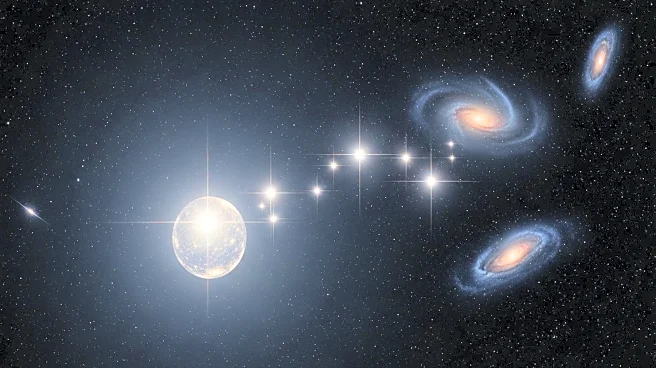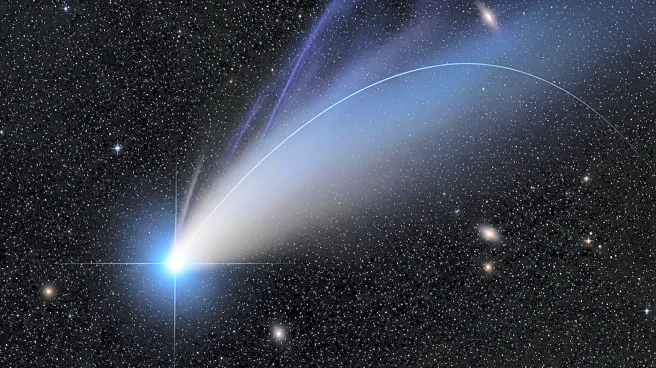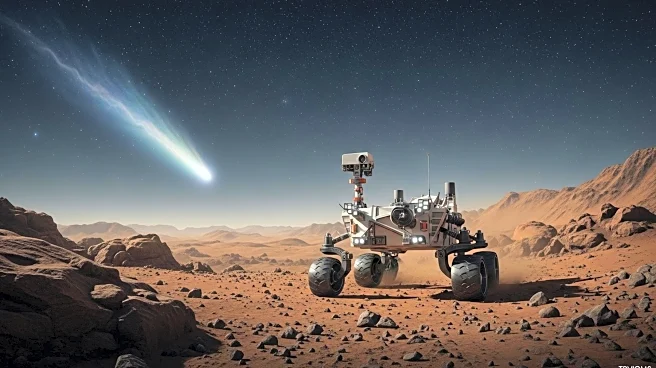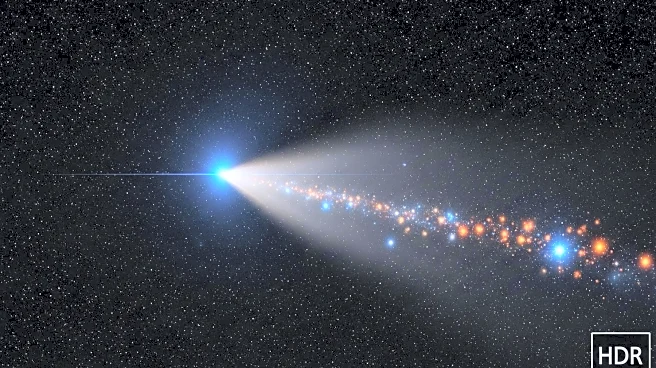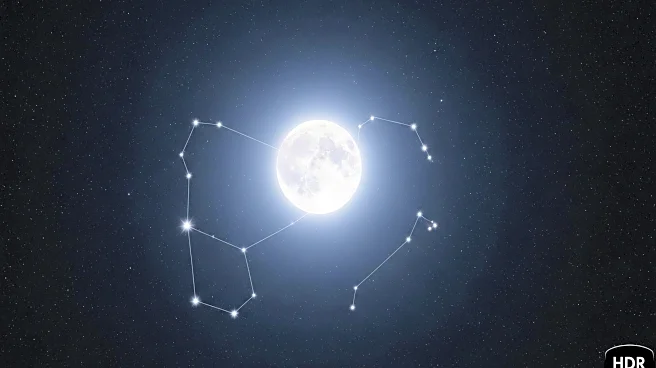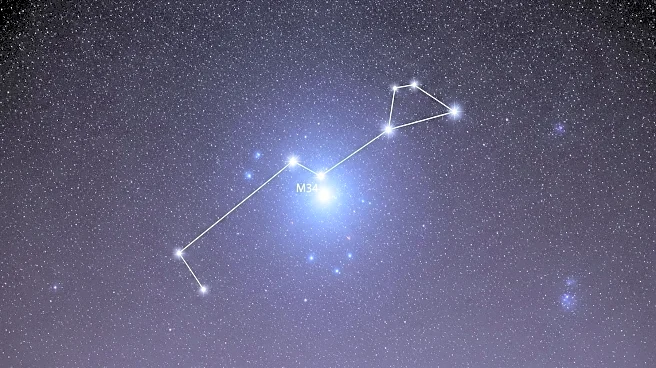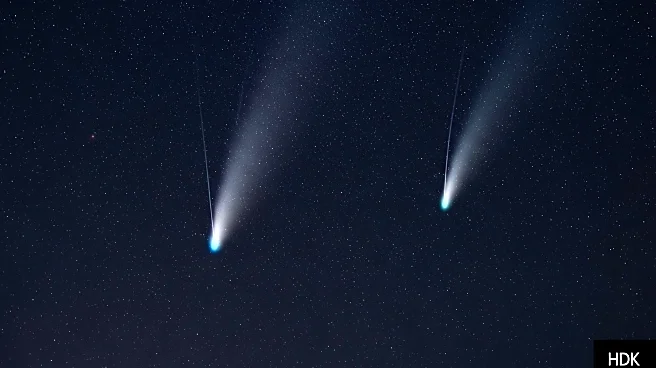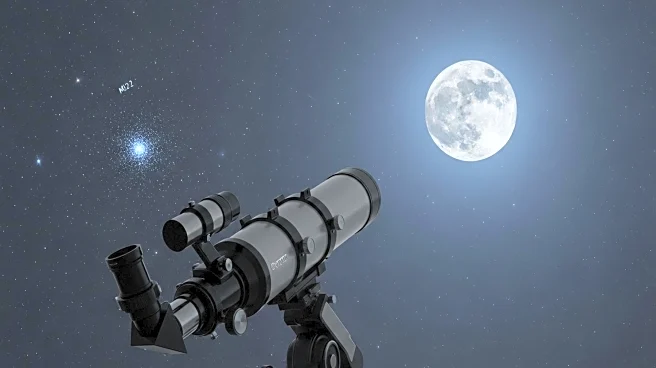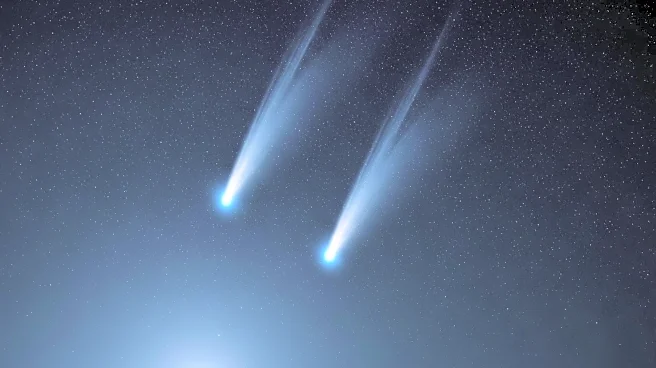What is the story about?
What's Happening?
Ceres, the largest object in the asteroid belt, is currently positioned close to the 5th-magnitude star Phi2 Ceti in the constellation Cetus. This proximity aids in its identification for observers. The best viewing time is about two hours after sunset, before the Moon rises, when Ceres is approximately 15° high in the east. Ceres will continue to climb throughout the evening, allowing for observation even after moonrise. The dwarf planet is glowing at magnitude 7.6, making it visible with binoculars or telescopes. The event provides a chance to observe Ceres as it passes close to Phi2 Ceti, enhancing its visibility against the night sky.
Why It's Important?
The visibility of Ceres near bright stars offers a unique opportunity for astronomers and enthusiasts to observe one of the solar system's significant bodies. This event can increase public interest in astronomy and celestial observation, providing educational opportunities about the asteroid belt and its components. Observing Ceres can contribute to understanding its characteristics and behavior, which is crucial for scientific research and space exploration. The event also highlights the importance of celestial navigation and the role of stars in identifying and tracking astronomical objects.
What's Next?
Observers are encouraged to continue tracking Ceres as it remains close to Phi2 Ceti, with optimal viewing conditions expected to persist. The ongoing visibility of Ceres may lead to increased public engagement with astronomy, potentially inspiring educational programs and community events focused on celestial observation. Future observations of Ceres can contribute to research on its composition and orbit, enhancing scientific knowledge of the asteroid belt.
Beyond the Headlines
The observation of Ceres near bright stars may prompt discussions on the historical significance of celestial navigation and its impact on exploration and discovery. Additionally, studying Ceres can provide insights into the formation and evolution of the solar system, offering a deeper understanding of planetary science and the dynamics of celestial bodies.
AI Generated Content
Do you find this article useful?
